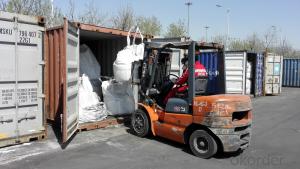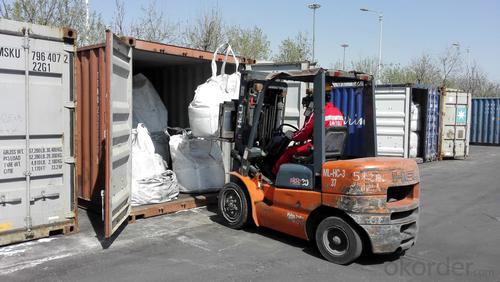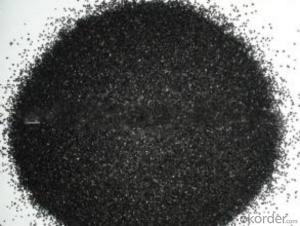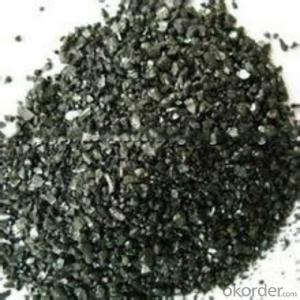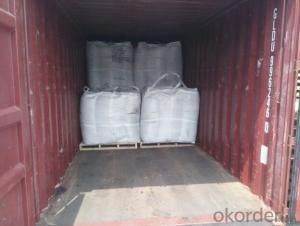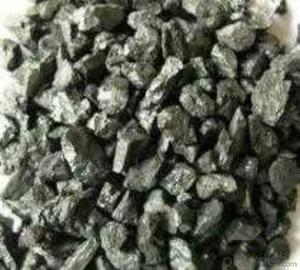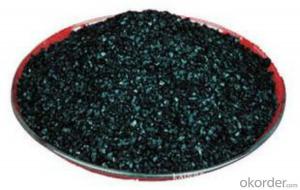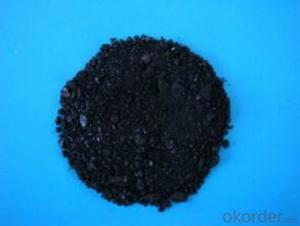Gas Calciend anthracite used as charging coke
- Loading Port:
- Tianjin
- Payment Terms:
- TT OR LC
- Min Order Qty:
- 20.9
- Supply Capability:
- 1009 m.t./month
OKorder Service Pledge
OKorder Financial Service
You Might Also Like
Introduction:
Calcined anthracite can be called carbon additive, carbon raiser, recarburizer, injection coke, charging coke, gas calcined anthracite.It is playing more and more important role in the industry
Best quality Anthracite as raw materials through high temperature calcined at over 2000℃ by the DC electric calciner with results in eliminating the moisture and volatile matter from Anthracite efficiently, improving the density and the electric conductivity and strengthening the mechanical strength and anti-oxidation. It has good characteristics with low ash, low resistivity, low sulphur, high carbon and high density. It is the best material for high quality carbon products. It is used as carbon additive in steel industry or fuel.
Features:
G-High Calcined Anthracite is produced when Anthracite is calcined under the temperature of 1240°C in vertical shaft furnaces. G-High Calcined Anthracite is mainly used in electric steel ovens, water filtering, rust removal in shipbuilding and production of carbon material.We are proud to work with customers around the world
Specifications:
F.C.% | 95MIN | 94MIN | 93MIN | 92MIN | 90MIN | 85MIN | 84MIN |
ASH % | 4MAX | 5MAX | 6 MAX | 6.5MAX | 8.5MAX | 12MAX | 13MAX |
V.M.% | 1 MAX | 1MAX | 1.0MAX | 1.5MAX | 1.5MAX | 3 MAX | 3 MAX |
SULFUR % | 0.3MAX | 0.3MAX | 0.3MAX | 0.35MAX | 0.35MAX | 0.5MAX | 0.5MAX |
MOISTURE % | 0.5MAX | 0.5MAX | 0.5MAX | 0.5MAX | 0.5MAX | 1MAX | 1MAX |
Pictures

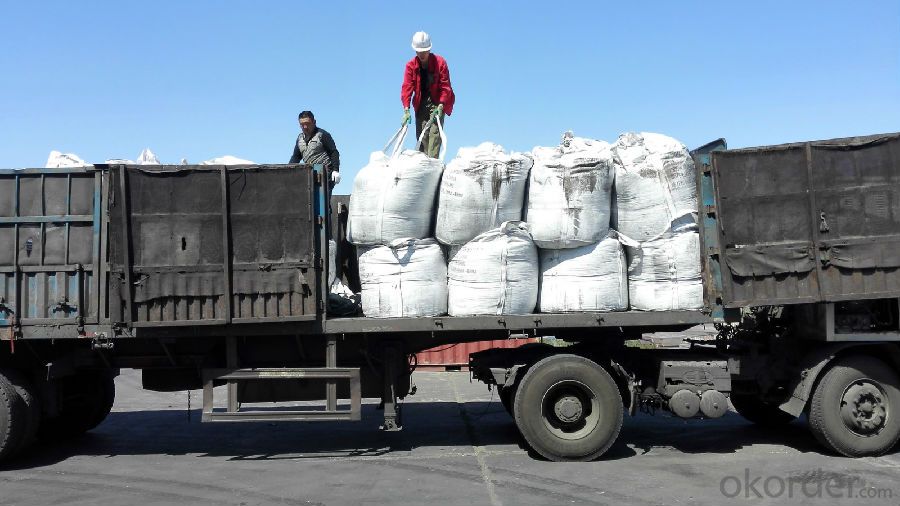

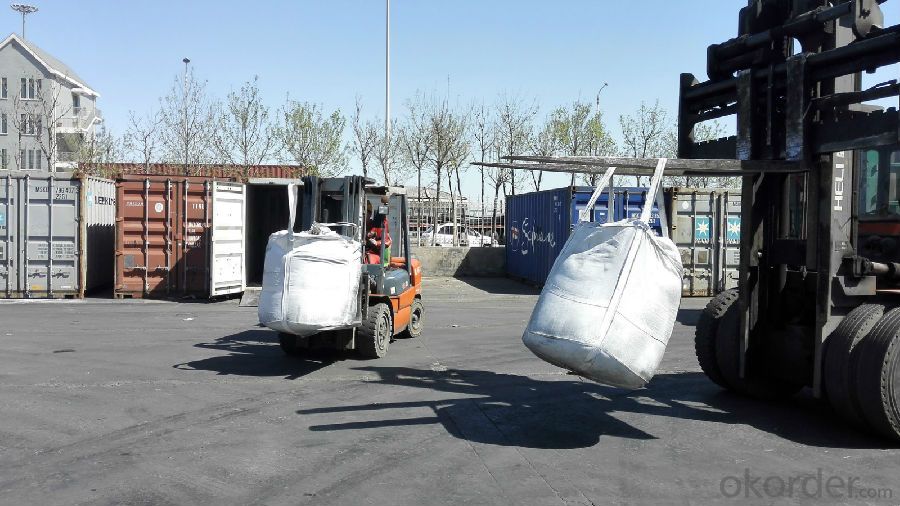
FAQ:
Packing:
(1). Waterproof jumbo bags: 800kgs~1100kgs/ bag according to different grain sizes;
(2). Waterproof PP woven bags / Paper bags: 5kg / 7.5kg / 12.5kg / 20kg / 25kg / 30kg / 50kg small bags;
(3). Small bags into jumbo bags: waterproof PP woven bags / paper bags in 800kg ~1100kg jumbo bags.
Payment terms
20% down payment and 80% against copy of B/L.
Workable LC at sight,
- Q: How is carbon used in the electronics industry?
- Carbon is used in the electronics industry in various forms, such as carbon nanotubes and graphene, to enhance the performance of electronic devices. These carbon-based materials possess excellent electrical conductivity, high strength, and thermal properties, making them ideal for use in transistors, batteries, capacitors, and other electronic components. Additionally, carbon is used as a crucial element in the manufacturing of printed circuit boards and as a key component in the fabrication of LCD screens and touchscreens.
- Q: What are the different types of carbon-based polymers?
- There are several different types of carbon-based polymers, each with its own unique properties and applications. Some of the most common types include: 1. Polyethylene (PE): This is one of the most widely used polymers and is known for its high strength and chemical resistance. It is commonly used in packaging materials, plastic bottles, and pipes. 2. Polypropylene (PP): PP is similar to PE but with a higher melting point and better resistance to heat. It is commonly used in automotive parts, textiles, and food packaging. 3. Polystyrene (PS): PS is a lightweight and rigid polymer that is commonly used in packaging materials, disposable utensils, and insulation. 4. Polyvinyl chloride (PVC): PVC is a versatile polymer that can be rigid or flexible depending on the additives used. It is commonly used in pipes, electrical insulation, and flooring. 5. Polyethylene terephthalate (PET): PET is a strong and lightweight polymer that is commonly used in beverage bottles, food containers, and synthetic fibers. 6. Polyurethane (PU): PU is a flexible and durable polymer that is commonly used in foams, coatings, adhesives, and textiles. 7. Polycarbonate (PC): PC is a strong and transparent polymer that is commonly used in eyeglass lenses, safety goggles, and electronic components. 8. Phenolic resins: These polymers are known for their excellent heat resistance and are commonly used in coatings, adhesives, and electrical components. These are just a few examples of the many carbon-based polymers that exist. Each type has its own specific properties and applications, making them suitable for a wide range of industries and products.
- Q: How does carbon impact food production?
- Carbon impacts food production in several ways. Firstly, carbon dioxide (CO2) is a major greenhouse gas that contributes to climate change. Increased levels of CO2 in the atmosphere lead to higher temperatures, altered rainfall patterns, and more frequent extreme weather events, all of which can negatively affect crop growth and productivity. For example, excessive heat can reduce crop yields and quality, while intense rainfall or droughts can cause flooding or water scarcity, respectively, both of which can damage crops and reduce agricultural productivity. Furthermore, carbon emissions from agricultural practices, such as the use of synthetic fertilizers, deforestation for agriculture, and livestock production, contribute to the overall carbon footprint of the food system. These emissions exacerbate climate change, creating a vicious cycle where climate change negatively impacts food production, while food production contributes to climate change. Additionally, carbon emissions from the transportation and processing of food also impact its production. The transportation of food over long distances, often involving the use of fossil fuels, results in carbon emissions. Similarly, the processing and packaging of food require energy, often derived from fossil fuels, which further contributes to carbon emissions. To mitigate the carbon impact on food production, sustainable agricultural practices need to be adopted. This includes practices such as agroforestry, organic farming, and precision agriculture, which can help sequester carbon in soils, reduce the reliance on synthetic fertilizers, and improve overall soil health. Additionally, reducing food waste and promoting local and seasonal food consumption can reduce carbon emissions associated with transportation and processing. Overall, carbon impacts food production through its contribution to climate change and associated extreme weather events, as well as through emissions generated from agricultural practices and food processing. Addressing these impacts is crucial for ensuring food security and sustainability in the face of climate change.
- Q: Last night to go to the supermarket to buy 5 batteries, see Toshiba carbon batteries, I finally bought the super alkaline batteries, alkaline batteries and carbon is the difference in where? What kind of battery is best for digital cameras? Thank you
- Because the ingredients still contain cadmium, and therefore must be recovered, so as to avoid damage to the environment of the earth.Alkaline batteries are suitable for large power consumption and long time use. The internal resistance of the battery is low, resulting in the current general Zn Mn batteries, is conductive copper, steel shell shell is safe and reliable. No need to recycle. Based on his environmental protection, and the current characteristics of large, so now alkaline battery more.
- Q: Why carbon fiber resistant to low temperature
- Resistance to 180 DEG C carbon fiber can be low temperature, under this condition, many materials are brittle, even sturdy steel has become fragile than glass, and carbon fiber under this condition is still very soft.
- Q: Material characteristics of carbon fiber
- This allows carbon fibers to have the highest specific strength and specific modulus in all high-performance fibers. Compared with the metal materials such as titanium, steel and aluminium, carbon fiber has the characteristics of high strength, high modulus, low density and low coefficient of linear expansion. It can be called the "king of new materials". In addition to carbon fiber with general characteristics of carbon material, its appearance has obvious anisotropy and soft, can be processed into a variety of fabrics, and the proportion of small, along the fiber axis show a very high strength carbon fiber reinforced epoxy resin composites, the strength and modulus of composite indicator in the existing structural materials is the highest. The tensile strength of carbon fiber resin composite materials are generally in more than 3500 MPa, is 7 to 9 times that of steel, the tensile modulus of 230 to 430G were also higher than that of steel; therefore the specific strength of CFRP material intensity and density can be achieved above 2000 MPa, the specific strength of A3 steel is only 59 MPa.
- Q: How is carbon used in the production of nanotubes?
- Carbon is used in the production of nanotubes by being arranged in a unique structure where carbon atoms are bonded together in a hexagonal lattice, forming a tube-like structure. This arrangement allows for the formation of nanotubes with exceptional mechanical, electrical, and thermal properties, making them ideal for various applications in fields such as electronics, materials science, and medicine.
- Q: How to extinguish the charcoal fire?
- The best way is to destroy the charcoal with residual charcoal poured into the water to save half of Tietong full out dry can be reused
- Q: What are the different types of carbon-based concrete additives?
- There are several different types of carbon-based concrete additives that can enhance the performance and properties of concrete. These additives are primarily derived from carbon-based materials and can be categorized into three main types: carbon nanotubes, graphene, and carbon fibers. 1. Carbon Nanotubes: These are cylindrical structures made up of carbon atoms arranged in a unique hexagonal pattern. Carbon nanotubes have exceptional mechanical and electrical properties, making them highly desirable as concrete additives. When added to concrete, they can improve its strength, durability, and toughness. Carbon nanotubes also enhance the electrical conductivity of concrete, which is beneficial for applications such as self-healing concrete and anti-static flooring. 2. Graphene: Graphene is a single layer of carbon atoms arranged in a two-dimensional lattice. It is known for its exceptional strength, high electrical conductivity, and excellent barrier properties. When incorporated into concrete, graphene can significantly improve its mechanical properties, such as compressive strength, flexural strength, and abrasion resistance. It also enhances the durability and impermeability of concrete, providing resistance against water and chemical ingress. 3. Carbon Fibers: These are long, thin strands of carbon, typically derived from organic polymers such as polyacrylonitrile or pitch. Carbon fibers possess excellent tensile strength and are widely used as reinforcements in various construction materials, including concrete. When added to concrete, carbon fibers can enhance its flexural strength, impact resistance, and cracking behavior. They also improve the ductility and toughness of concrete, making it more resistant to dynamic loads. It is worth noting that each type of carbon-based concrete additive has its unique advantages and applications. Carbon nanotubes offer exceptional mechanical and electrical properties, graphene provides enhanced strength and barrier properties, while carbon fibers enhance flexural strength and impact resistance. The choice of additive depends on the specific requirements of the concrete application and the desired performance characteristics.
- Q: What are the meanings of carbon, graphite, burr, two cuts and four cuts in steel?.
- Flash is to flash, or two bending. Two cuts; one cut two on average, three segments, four cuts; an average cut of four, and five segments. The back is industry talk.
Send your message to us
Gas Calciend anthracite used as charging coke
- Loading Port:
- Tianjin
- Payment Terms:
- TT OR LC
- Min Order Qty:
- 20.9
- Supply Capability:
- 1009 m.t./month
OKorder Service Pledge
OKorder Financial Service
Similar products
Hot products
Hot Searches
